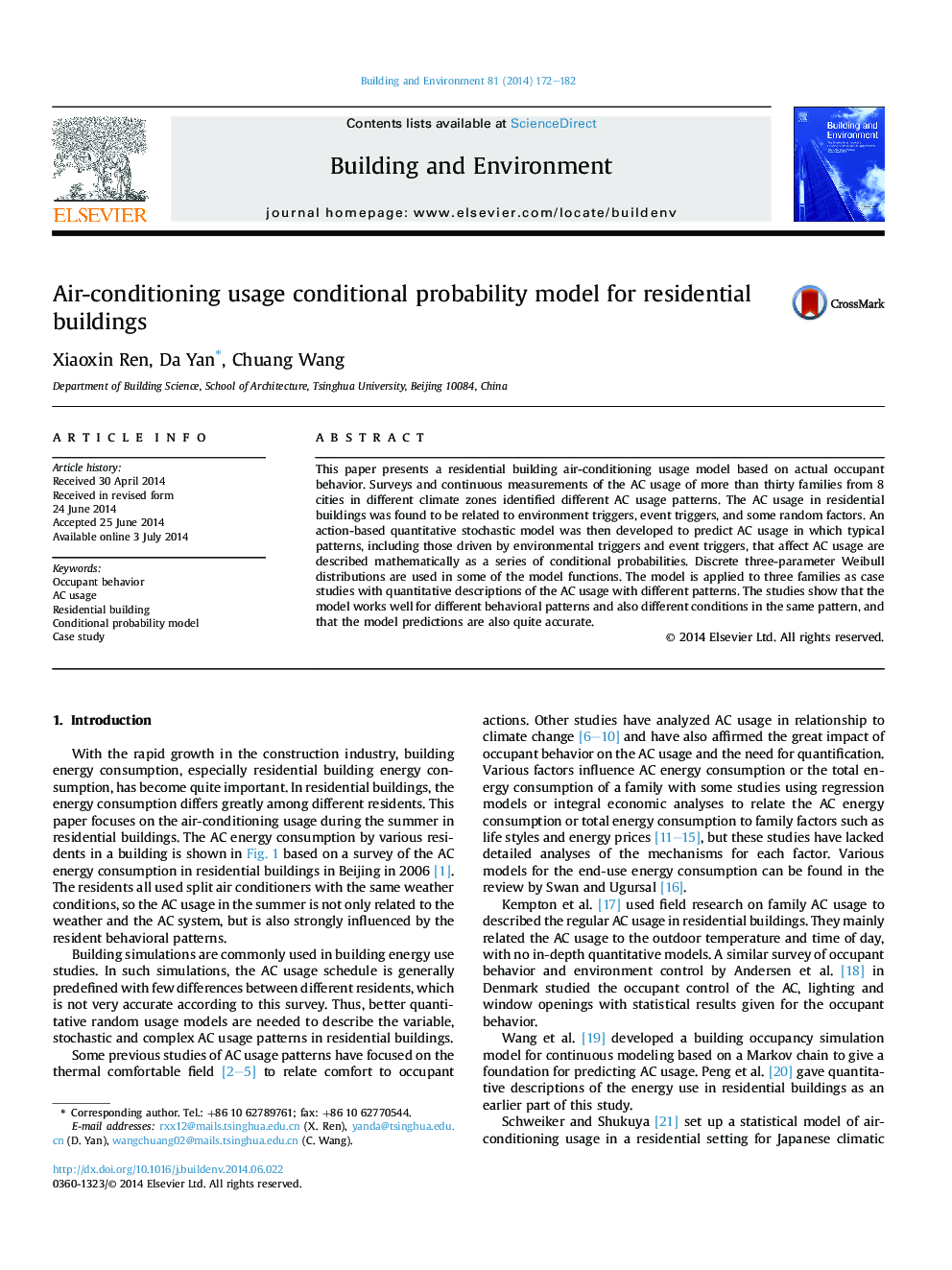| Article ID | Journal | Published Year | Pages | File Type |
|---|---|---|---|---|
| 6700277 | Building and Environment | 2014 | 11 Pages |
Abstract
This paper presents a residential building air-conditioning usage model based on actual occupant behavior. Surveys and continuous measurements of the AC usage of more than thirty families from 8 cities in different climate zones identified different AC usage patterns. The AC usage in residential buildings was found to be related to environment triggers, event triggers, and some random factors. An action-based quantitative stochastic model was then developed to predict AC usage in which typical patterns, including those driven by environmental triggers and event triggers, that affect AC usage are described mathematically as a series of conditional probabilities. Discrete three-parameter Weibull distributions are used in some of the model functions. The model is applied to three families as case studies with quantitative descriptions of the AC usage with different patterns. The studies show that the model works well for different behavioral patterns and also different conditions in the same pattern, and that the model predictions are also quite accurate.
Related Topics
Physical Sciences and Engineering
Energy
Renewable Energy, Sustainability and the Environment
Authors
Xiaoxin Ren, Da Yan, Chuang Wang,
